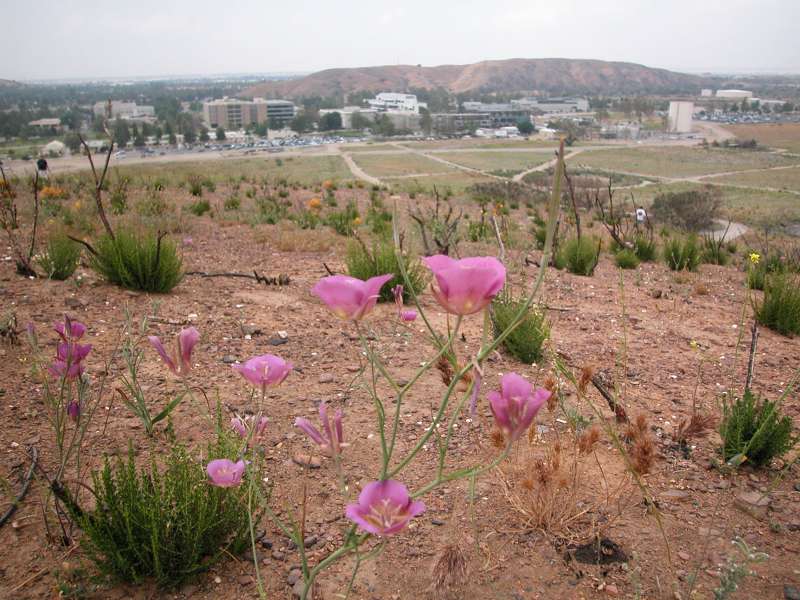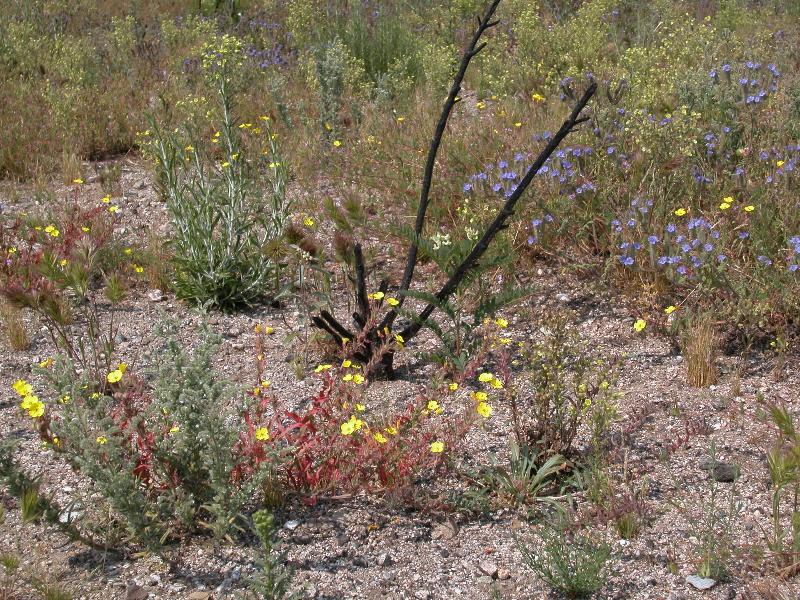Plant survival vs. population persistance
Some species have characteristics that allow a plant to survive fire.
Other species do not have individuals that survive fire, but the population regenerates from a soil seed bank. In this case, the plants do not survive, but the population persists on the site. (It is not extirpated.)
Plants that survive fire
From your previous lesson: Plants that survive fire may...
1) Resprout from belowground organs like a root crown (where the root meets the stem) or a rhizome (an underground, horizontal stem). Not all plants can do this. They have to have buds below ground that can start growing to produce a new stem, and they have to have sufficient storage reserves (starch) below ground to provide energy to produce the new stems and to keep the root alive while the stem is growing.
2) Have a life cycle that typically involves dying down to the ground each year and producing a new shoot from belowground roots, bulbs, corms, etc. These types of plants are typically dormant during late summer, when most fires occur anyway, with only the belowground parts alive. These belowground parts are protected from heat by the insulating properties of dry soil.
3) For a tree: have thick, insulating bark that protects the vascular cambium (the cell layer right under the bark that produces new xylem and phloem). If the tree is tall enough that its crown (the live branches and leaves) does not burn up in the fire, protecting the cambium will insure that the tree can continue to produce new xylem, to get water to the leaves, and new phloem, to get sugars to the roots, after the fire.
Note that when we talk about resprouting, we are talking about an individual plant that survives a fire putting up new shoots. We are not talking about seeds germinating.

Persistance of species that die in fire
From your previous lesson: If the plants do not survive fire, their populations may still persist on the site if they...
4) Have an annual life cycle. Again, these plants are often dead by the time most fires occur in southern California, and seeds in the soil germinate, as usual, with the next rains.
5) Have seeds that are stimulated to germinate by either heat or chemicals in smoke. This causes seeds to germinate in the 1-2 years after a fire, when competition from other plants is low and conditions are good for seedling survival. Species that have seeds with these types of germination requirements often build up soil seed banks over years, producing seeds every year that do not germinate, but are added to the soil seed bank (a collection of dormant seeds in the soil). After a fire, fire-stimulated germination will deplete the soil seed bank (because the seeds germinated), and germination after subsequent fires will depend on whether the species has managed to replenish the soil seed bank since the last fire.
6) Have cones that open to release seeds after fire. Conifers (pines and relatives) that do this typically hold cones on their branches for years. Seeds are released when fires come through. Not all conifers do this.


Characteristics of species in chaparral
Read the first four pages of the excerpt from Halsey (2005) that is provided here (3.5 MB). (If you need a smaller copy, you can access a 215 kB copy, but the resolution is poor.) This is an excerpt from a book that was written for the general public. After you have read the entire first four pages, answer the questions below.